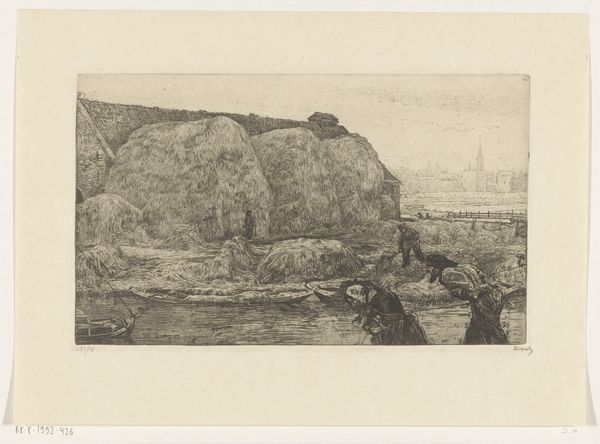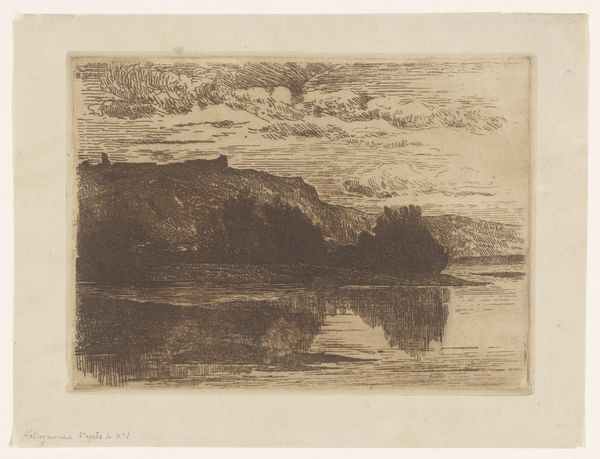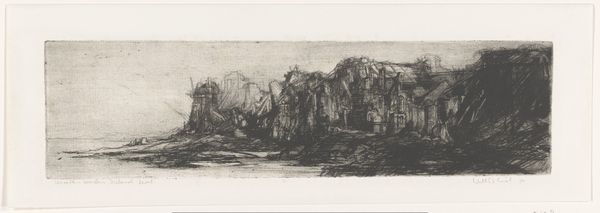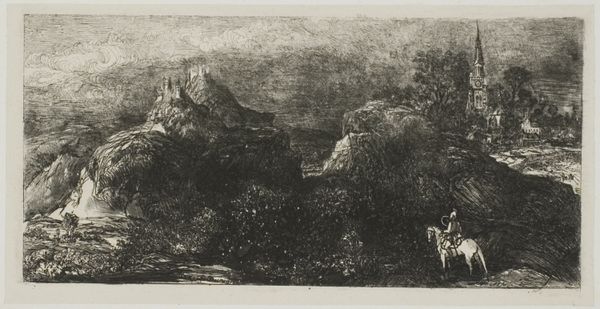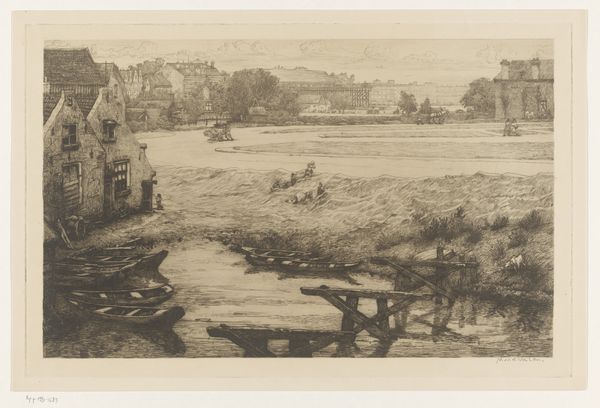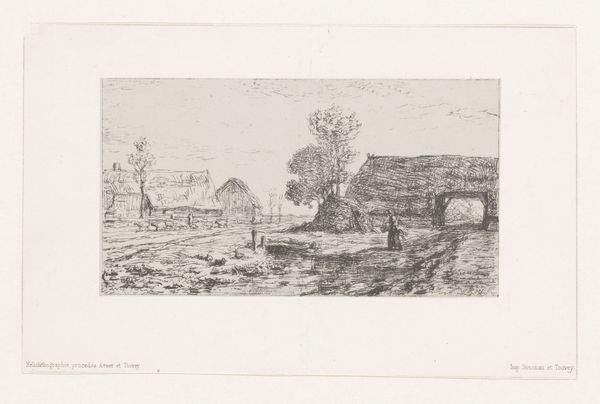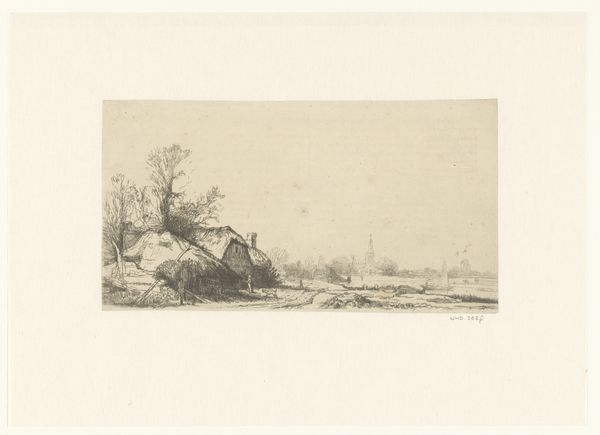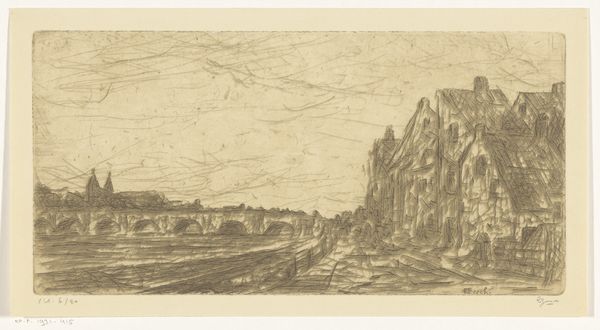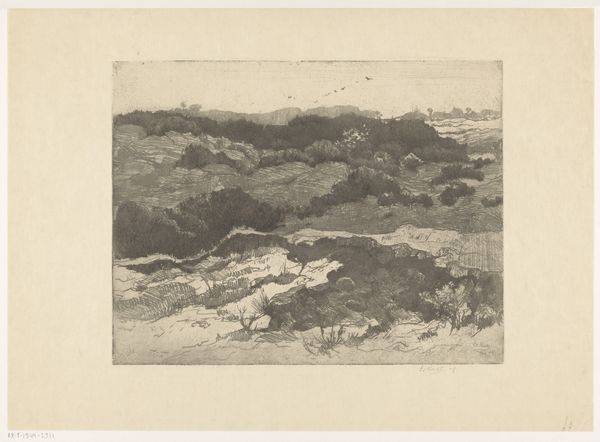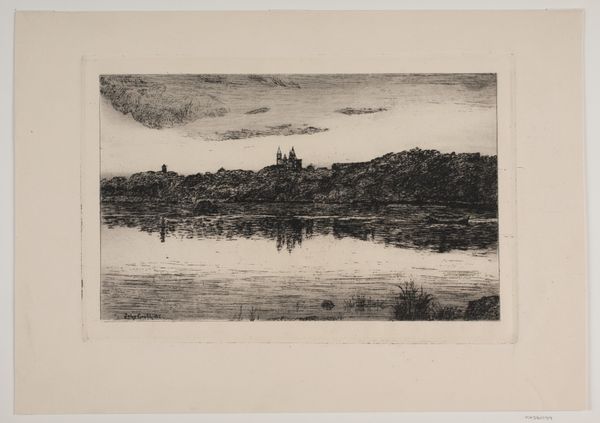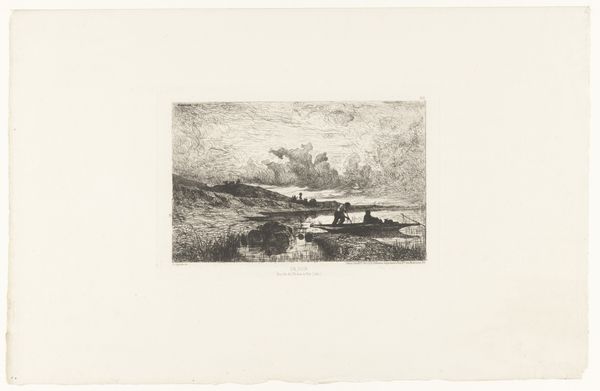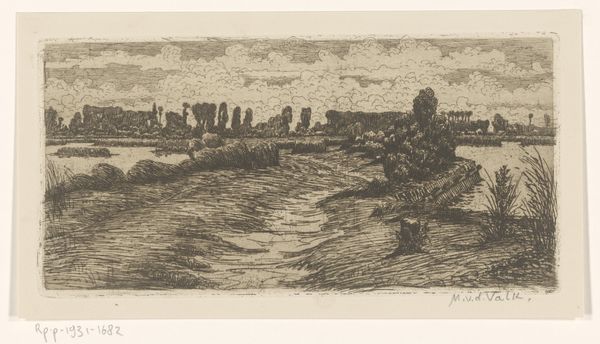
Dimensions: 216 × 363 mm (plate); 268 × 415 mm (sheet)
Copyright: Public Domain
Curator: Here we have Adolphe Appian's "Bridge at Hautville," created around 1870. It's an etching printed on paper, a beautiful example of his plein-air work. Editor: It’s such a moody piece. The stark contrast between light and shadow, the rugged rocks… it feels almost gothic, despite being a landscape. There’s a sense of isolation here. Curator: The contrast is key, yes. Appian was deeply interested in tonalism. Look at the layering of light—how it reflects off the water, hits the bridge. It’s almost dreamlike. The bridge itself could represent a connection to a past age of transport, Roman maybe? Editor: And the figure in the foreground fishing disrupts that past—he’s caught in the present but still bound to natural elements that humans don't control. His presence, though small, makes you think about labor and how even leisure is shaped by access and the physical landscape. Curator: Indeed. Consider the composition, too. The bridge acts as a central anchor, guiding our eyes through the landscape, almost a metaphor for societal continuity. It certainly offers passage but it is in direct contrast to the solid immovability of the land! Editor: Right, the architecture versus nature dichotomy is powerful. The bridge represents human attempt to organize landscape while that dramatic cliff face suggests how powerless those attempts are. What are those little figures standing atop it, gawking and rubber-necking at that grand scenery? Curator: Spectators perhaps, appreciating that which Appian wants to show us; the wonder of place through an accessible romanticist interpretation. Notice too, the etching technique itself. The precision and detail create texture, light and form. Editor: The use of etching also connects it to a long lineage of printmaking, an inherently democratic art form in that it allows for wider dissemination. Landscape art like this, disseminated in prints, would shape perception and foster civic pride. But for whom, one wonders? To what purpose was all this aesthetic contemplation aimed during the upheaval and class divisions of the late 19th Century? Curator: A point well taken! This seemingly serene scene reveals that even idyllic imagery is embedded within complex socioeconomic and historical contexts. The power of place indeed is complexly woven with time, perception and memory! Editor: It's funny how this seemingly simple landscape opens up all of these wider dialogues about our relationship to both the land and each other. Curator: Yes, a landscape alive with meaning still today!
Comments
No comments
Be the first to comment and join the conversation on the ultimate creative platform.
